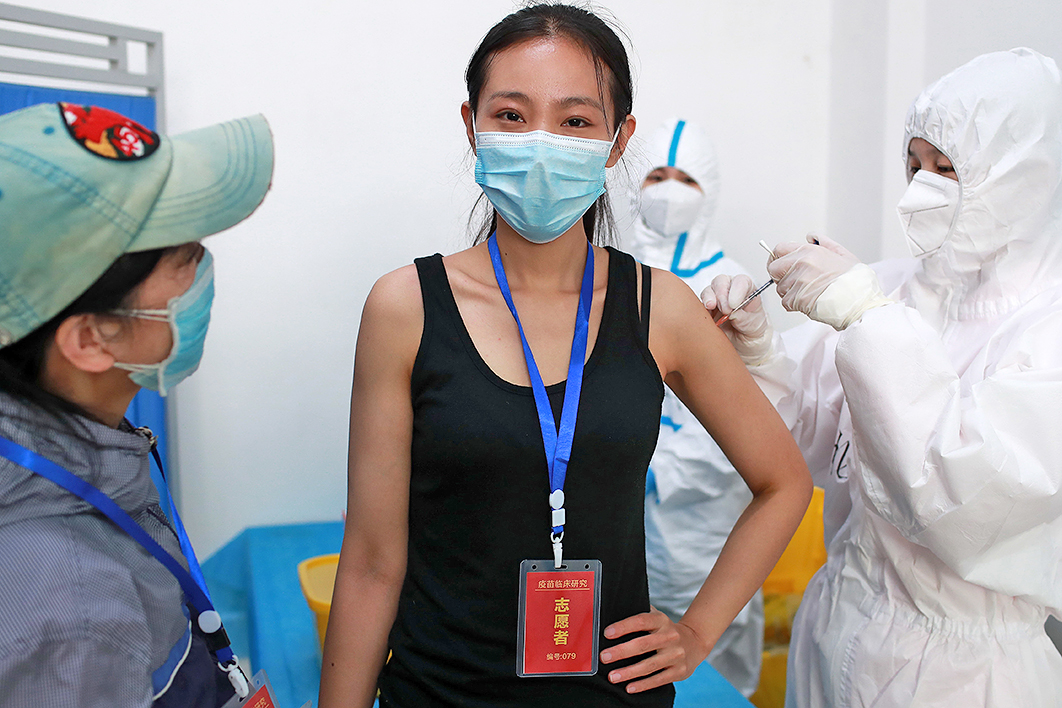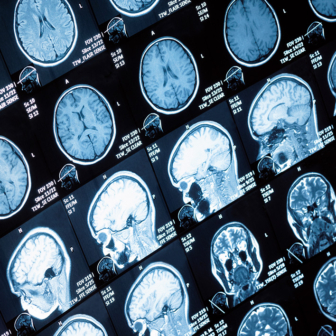Last week’s World Health Assembly, the seventy-third, was unprecedented on a number of counts, not least because delegates were beamed into the meeting from their remote locations. All in all, it went as well as might be hoped given it took place in the midst of a worst-in-a-generation pandemic.
The opening addresses from half a dozen heads of state were an impressive display of global commitment. Chinese president Xi Jinping made a US$2 billion pledge to the global Covid-19 response. Lofty words of commitment and unity were uttered by French president Emmanuel Macron, German chancellor Angela Merkel, South African president Cyril Ramaphosa and Moon Jae-in, president of South Korea.
Perhaps the most interesting — albeit by far the longest — of the opening addresses was given by Mia Mottley, prime minister of Barbados, on behalf of the Caribbean community. She tied together the pandemic, crippling debt and climate change in a call for moral leadership: “It is a crisis that calls for global leadership that will allow us to rebuild our humanity, our environment and the equity so badly needed in our societies and our economies. Covid has brought many of us closer than we have been with each other; it has equally cast a brighter light on the inequities in our society, but then it has also allowed the earth to breathe — yet again.”
The centrepiece of the meeting was its resolution on the Covid-19 response, which ended up being proposed by 146 member states, including Australia, the European Union and the African group. Like any highly negotiated resolution between sovereign states, it included a mix of motherhood statements, some real commitment on agreed areas of action, and a degree of constructive ambiguity. Those determined to pick over the entrails will debate whether the Australian government’s early call for an inquiry into the origins of SARS-CoV-2 and the WHO’s response shaped the final resolution, or whether some sort of review was always destined to be included in the meeting’s deliberations.
In the wash-up, the wording contained sufficient qualifications to accommodate both Chin’s view that an inquiry should happen only once the pandemic is over, and the push from other countries for it to be more urgent. It pledged to “initiate, at the earliest appropriate moment, and in consultation with Member States, a stepwise process of impartial, independent and comprehensive evaluation, including using existing mechanisms, as appropriate, to review experience gained and lessons learned from the WHO-coordinated international health response to Covid-19,” including “the actions of WHO and their timelines pertaining to the Covid-19 pandemic.”
The other sensitive part of the resolution was the extent to which it would mandate global cooperation in developing and sharing therapies and vaccines to treat and prevent the virus. Again the resolution held something for most readers: it recognised “extensive immunisation against COVID-19 as a global public good for health,” but only in a preambulatory paragraph, not in one of the “operative paragraphs” that carry the real weight of action.
Operatively, it did call for collaboration on the development of medicines and vaccines, including “existing mechanisms for voluntary pooling and licensing of patents in order to facilitate timely, equitable and affordable access to them” using the existing flexibilities in the international Trade in Services agreement, or TRIPS, overseen by the World Trade Organization. This did not go as far as the patent-pooling mechanism proposed by Costa Rica, but it did open the door for countries to use the TRIPS provisions that allow public health to override patent protections.
The way resolutions work in international forums like the World Health Assembly is that the wording is extensively negotiated prior to the meeting. When I first arrived in Geneva to work with UNAIDS, I was bewildered at being invited to observe an “informal informal.” Securing agreement between 193 sovereign member states requires a finely graduated deliberative apparatus. On technical issues — as opposed to elections, for example, or in the Security Council — resolutions are carried by consensus, making behind-the-scenes legwork essential.
Once a resolution is adopted, member governments can “disassociate” themselves from particular paragraphs. But that option has diplomatic perils — it is something of a sign of weakness both that you stand outside the global consensus and that you haven’t been persuasive on the substantive resolution. On Covid-19 the United States availed itself of this procedure, disassociating itself from the resolution on two counts.
One was the reference to sexual and reproductive health — for most UN members an unremarkable phrase but a target of right-wing American Christians who see it as code for abortion rights. The other was the references to patents — despite the moderate language and emphasis on existing mechanisms, the United States felt they “sent the wrong message” and gave insufficient regard to “the critical role that intellectual property plays in incentivising the development of new and improved health products.”
Much as the overwhelming majority of the World Health Assembly was upbeat in its collective resolve to tackle Covid-19 from a position of science, health and solidarity, a shadow was cast by the generally preposterous behaviour of the United States, utterly isolated in its oppositional stance. It began with a blustering address by US health secretary Alex Azar accusing the WHO of failing in its core mission. If the meeting had been an in-person affair it is hard to imagine he would have been able to withstand the collective scorn of the world’s other delegations. It continued with a threatening letter sent by Donald Trump, even as the meeting was in progress, giving the WHO thirty days to respond to his demands, or the United States would permanently freeze its funding and consider withdrawal.
We are used to the random relationship between the truth and Trump’s tweets, but somehow it was more shocking to see blatant falsehoods in a signed letter on presidential letterhead. The letter claimed that the WHO ignored reports of the virus in early December 2019, including in the Lancet, a claim the journal immediately refuted. It repeated the claim that Taiwan communicated information on human-to-human transmission on 31 December, despite the fact that Taiwan itself has explicitly backed away from that claim.
This manifestly false propaganda from the US administration is deeply corrosive of trust, even if in the end a more moderate solution may be agreed that allows the Americans to claim their concerns had been met.
Back in the real world, news from a number of the vaccine trials is starting to trickle out. The much-hyped effort by Moderna to develop a messenger-RNA vaccine — if it works it would be the first of its kind — came out with positive findings on 18 May that boosted its stock price, although it later fell back somewhat when investors realised the results were very preliminary and came from a company press release rather than a medical journal. Nevertheless, an immune response was found in twenty-five trial participants and neutralising antibodies were produced in the first four looked at — results across all forty-five participants in this first stage trial have not yet been reported.
Another of the closely watched trials from Oxford University released results showing that monkeys vaccinated with its vector vaccine were protected from lung infections, although the fact that virus was still detectable in their noses led to some questions about the level of protection provided.
The most substantial and thoroughly peer-reviewed results came from another vector vaccine being tested in Wuhan. These were the results of a phase 1 trial in humans showing the vaccine elicited strong immune responses with safety — suggesting the candidate vaccine was tolerated, albeit with mainly mild side-effects.
These are all positive developments, showing progress in getting vaccine candidates over the first hurdles of whether they produce an immune response and whether they are safe. But the road is still a long one — they must still prove they are effective in protecting against infection in people when they are actually exposed to SARS-CoV-2.
Developing a vaccine against a new coronavirus is painstaking, uncertain, incremental work. It doesn’t help that it is being undertaken in the glare of media scrutiny on behalf of an anxious public across the world. It doubly doesn’t help that share prices shoot up or plummet on every announcement. And it triply doesn’t help that geopolitical rivalries pivot on success. That is what the language of global public good is designed to guard against. •
Funding for this article from the Copyright Agency’s Cultural Fund is gratefully acknowledged.





